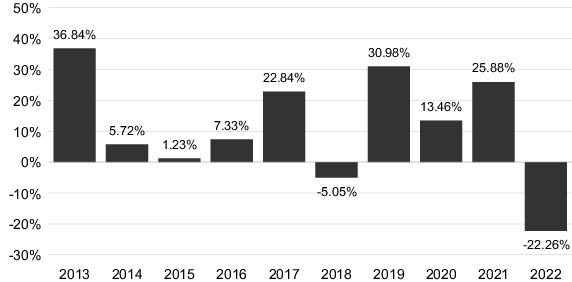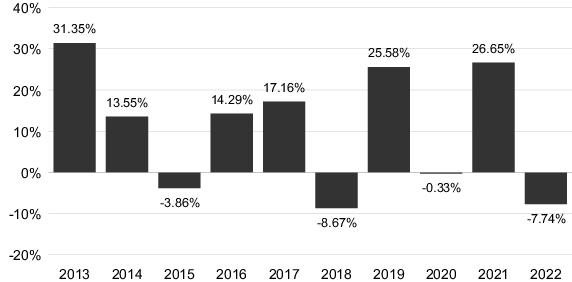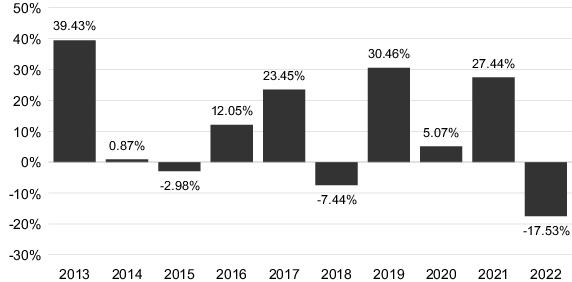Qualifications and Experience of Trustees
The Trustees considered the educational, business and professional experience of each Board member and the service by each Trustee as a trustee of other funds in the Fund Complex. The Trustees were selected to serve on the Board based upon their skills, experience, judgment, analytical ability, diligence, ability to work effectively with other Trustees, availability and commitment to attend meetings and perform the responsibilities of a Trustee and, for the Independent Trustees, a demonstrated willingness to take an independent and questioning view of management. The Trustees also considered, among other factors, the particular attributes described below with respect to the individual Board members. References to the experience, qualifications, attributes and skills of Trustees are pursuant to Securities and Exchange Commission (“SEC”) requirements, do not constitute holding out of the Board or any Trustee as having special expertise and shall not impose any greater responsibility or liability on any such person or on the Board by reason thereof.
Randall C. Barnes—Mr. Barnes has served as a Trustee of the Trust since 2015 and as a trustee of certain funds in the Fund Complex since 2004. Through his service as a Trustee and a trustee of other funds in the Fund Complex, as well as Chair of the Valuation Oversight Committee, his service on other registered investment company boards, prior employment experience as President of Pizza Hut International and as Treasurer of PepsiCo, Inc. and his personal investment experience, Mr. Barnes is experienced in financial, accounting, regulatory and investment matters.
Angela Brock-Kyle—Ms. Brock-Kyle has served as a Trustee of the Trust since November 2019 and as a trustee of certain funds in the Fund Complex since 2016. Through her service as a Trustee and a trustee of other funds in the Fund Complex, prior employment experience, including at TIAA where she spent 25 years in leadership roles, her professional training in law and business and her experience serving on the boards of public, private and non-profit organizations, including service as audit committee chair and as a member of governance and nominating committees, Ms. Brock-Kyle is experienced in financial, accounting, regulatory, governance and investment matters.
Thomas F. Lydon, Jr.—Mr. Lydon has served as a Trustee of the Trust since November 2019 and as a trustee of other funds in the Fund Complex since 2005. Through his service as a Trustee and a trustee of other funds in the Fund Complex, his service as Chair of the Contracts Review Committee, his experience as President of Global Trends Investments, a registered investment adviser, his service on the board of U.S. Global Investors, Inc. (GROW), an investment adviser and transfer agent, as well as his prior service on another registered investment company board and his authorship and editorial experience regarding exchange-traded funds, Mr. Lydon is experienced in financial, investment and governance matters.
Ronald A. Nyberg—Mr. Nyberg has served as a Trustee of the Trust since 2015 and as a trustee of certain funds in the Fund Complex since 2003. Through his service as a Trustee and a trustee of other funds in the Fund Complex, as well as Chair of the Nominating and Governance Committee, his service on other registered investment company boards, his professional training and experience as an attorney and his former experience as partner of the law firm, Momkus LLP, and Nyberg & Cassioppi, LLC, and Executive Vice President and General Counsel of Van Kampen Investments, an asset management firm, Mr. Nyberg is experienced in financial, regulatory and governance matters.
Sandra G. Sponem—Ms. Sponem has served as a Trustee of the Trust since November 2019 and as a trustee of certain funds in the Fund Complex since 2016. Through her service as a Trustee and a trustee of other funds in the Fund Complex, her service as Chair of the Audit Committee, her service on other registered investment company boards, her prior employment experience, including as Chief Financial Officer of Piper Jaffray Companies, Inc. (now Piper Sandler Companies) and its predecessor, U.S. Bancorp Piper Jaffray, Inc., and as Senior Vice President and Chief Financial Officer of M.A. Mortenson Companies, Inc., a construction and real estate development company, her Certified Public Accountant (inactive) designation and previously held securities licenses and extensive knowledge of accounting and finance and the financial services industry, Ms. Sponem is experienced in accounting, financial, governance and investment matters. The Board has determined that Ms. Sponem is an “audit committee financial expert” as defined by the SEC.
Ronald E. Toupin, Jr.—Mr. Toupin has served as a Trustee of the Trust since 2015 and as a trustee of certain funds in the Fund Complex since 2003. Mr. Toupin currently serves on the Governing Council of the Independent Directors Council (IDC) of the Investment Company Institute (ICI) and on the Board of Governors of the ICI. Through his service as a Trustee and a trustee of other funds in the Fund Complex, as well as the Independent Chair of the





